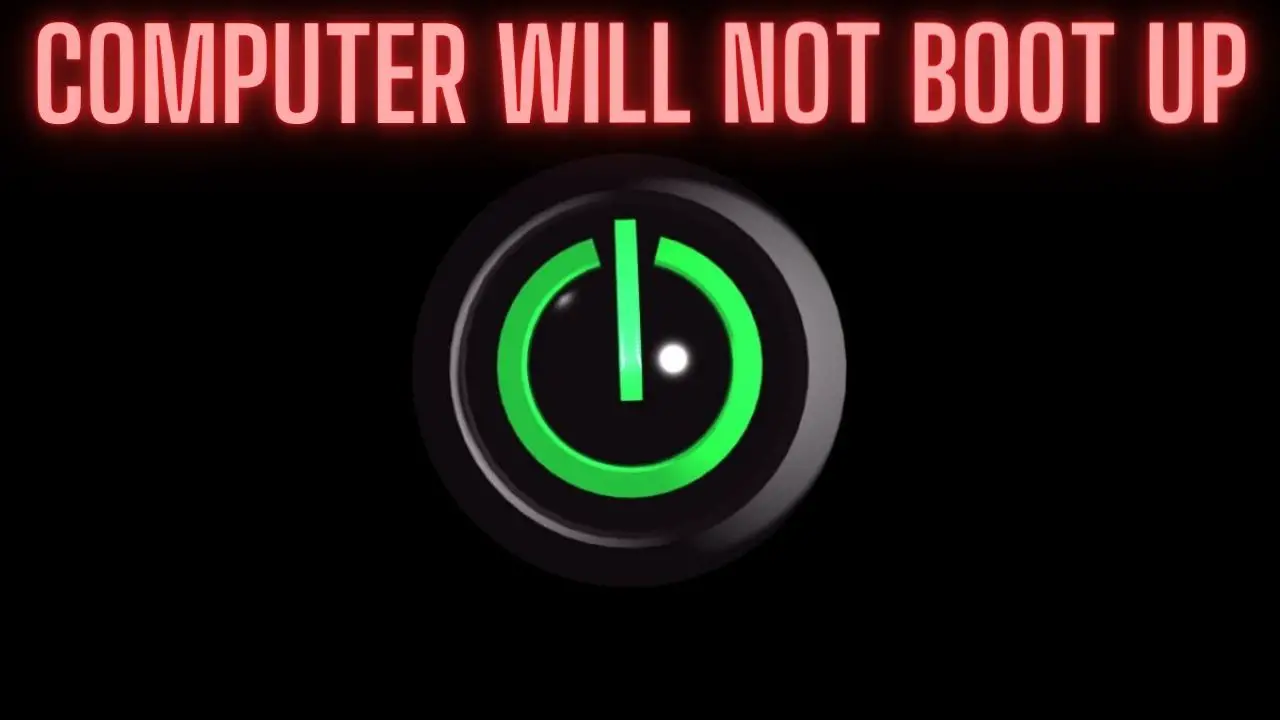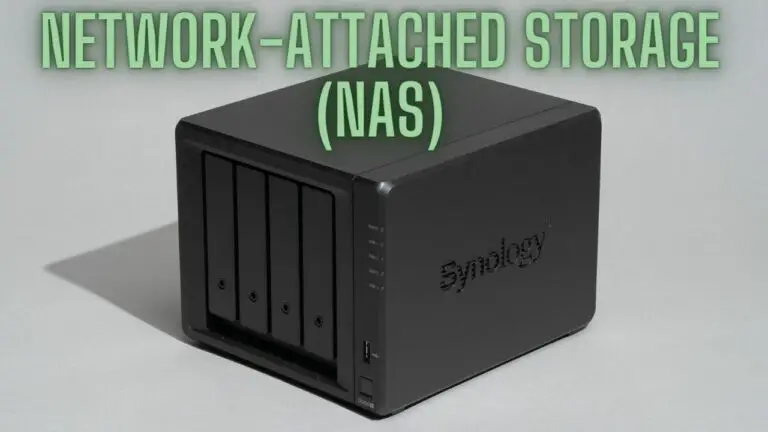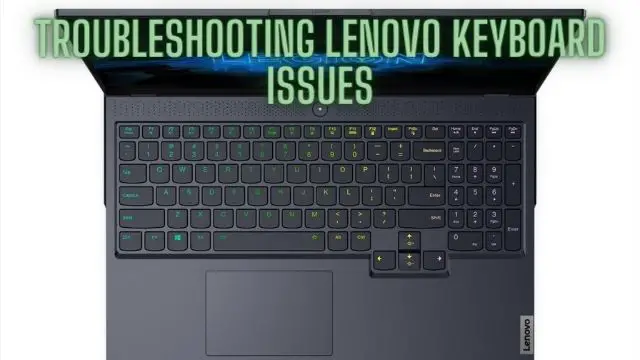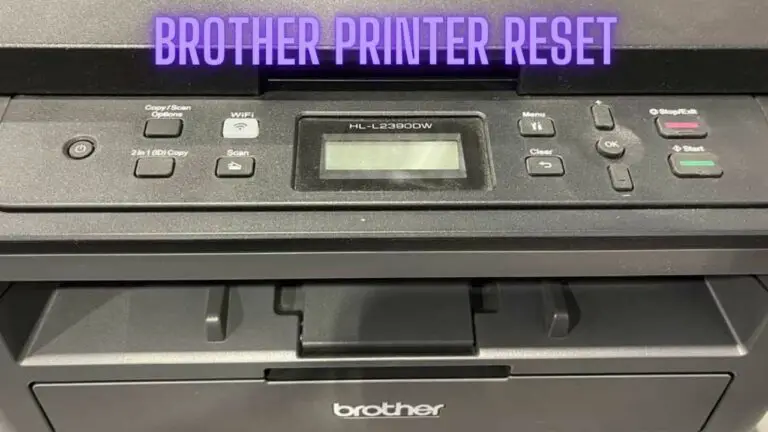Computer Will Not Boot Up: Troubleshooting and Solutions
Introduction
Experiencing a computer that won’t boot up can be a frustrating and concerning issue, as it prevents you from accessing your files, programs, and operating system. When your computer fails to boot, it’s essential to diagnose and address the underlying cause promptly to restore functionality and minimize downtime.
This guide aims to provide comprehensive assistance for troubleshooting and resolving issues related to a computer that will not boot up. It will cover common causes of boot failure, initial checks to perform, troubleshooting steps to identify and resolve hardware or software issues, advanced troubleshooting methods for more complex issues, guidance on seeking professional assistance if needed, and concluding remarks to ensure a successful resolution.
By following the steps outlined in this guide, you can effectively diagnose and address the underlying issues preventing your computer from booting up, allowing you to regain access to your system and resume normal operation.
Common Causes of Boot Failure
- Power Supply Issues: A faulty power supply unit (PSU) or inadequate power delivery can prevent the computer from receiving the necessary power to boot up properly.
- Hardware Component Failure: Failure of essential hardware components such as the motherboard, CPU, RAM, or storage devices (e.g., hard drive or SSD) can prevent the computer from booting up.
- Loose or Faulty Connections: Loose or damaged connections between hardware components, such as cables, connectors, or expansion cards, can disrupt the boot process.
- Corrupted Operating System Files: Corruption of critical system files or boot configuration files within the operating system can prevent the computer from booting into the operating system.
- Boot Device Selection: Incorrect boot device selection in the BIOS/UEFI settings or a malfunctioning boot device (e.g., a corrupted or damaged hard drive) can prevent the computer from booting into the operating system.
- BIOS/UEFI Settings Misconfiguration: Incorrect BIOS/UEFI settings or changes to system settings that prevent proper initialization of hardware components can lead to boot failure.
- Software or Driver Issues: Incompatible or corrupt software, drivers, or firmware can cause system instability or prevent the operating system from booting up properly.
- Overheating: Overheating of hardware components, particularly the CPU or GPU, due to inadequate cooling or dust buildup can cause the computer to shut down or fail to boot.
- External Devices or Peripherals: Connected external devices or peripherals (e.g., USB drives, printers, or external hard drives) with bootable media or malfunctioning drivers can interfere with the boot process.
- Malware or Virus Infection: Malware or virus infections can corrupt system files, modify boot configurations, or interfere with the normal operation of the operating system, leading to boot failure.
- Hardware Compatibility Issues: Incompatible hardware components or devices, such as incompatible RAM modules or expansion cards, can cause system instability or prevent the computer from booting up.
- Physical Damage: Physical damage to hardware components, such as water damage, impact damage, or electrical damage, can disrupt the normal operation of the computer and lead to boot failure.
By identifying the common causes of boot failure, you can effectively troubleshoot and resolve the underlying issues preventing your computer from booting up properly. Depending on the specific symptoms and circumstances, you can perform initial checks and troubleshooting steps to diagnose and address the problem accordingly.
Initial Checks
When encountering boot failure on your computer, it’s essential to perform some initial checks to identify potential causes and narrow down the issue. Here are some initial checks to perform:
- Power Connection: Ensure that the power cable is securely plugged into the power outlet and the back of your computer. Verify that the power supply switch (if present) is turned on.
- Power Supply Unit (PSU): Check if the power supply unit (PSU) fan is spinning when the computer is turned on. A non-functional PSU fan could indicate a faulty power supply unit.
- Power Indicator Lights: Check for any power indicator lights on the front panel or motherboard of your computer. These lights can indicate whether the computer is receiving power.
- External Connections: Disconnect any unnecessary external devices or peripherals (e.g., printers, external hard drives, USB devices) from the computer. Sometimes, a malfunctioning external device can cause boot failure.
- Internal Connections: Open the computer case and check for any loose or disconnected internal cables, such as those connecting the power supply to the motherboard or storage devices. Ensure that all components are properly seated and connected.
- RAM Modules: Reseat the RAM modules by removing them from their slots and reinstalling them firmly. If you have multiple RAM modules, try booting the computer with each module individually to rule out faulty RAM.
- Graphics Card (GPU): Ensure that the graphics card (if present) is properly seated in its PCIe slot and has power connectors attached if required. If you have onboard graphics, try removing the dedicated GPU and booting with onboard graphics.
- Storage Devices: Check the connections and status of the storage devices (e.g., hard drive, SSD) in the computer. Ensure that cables are securely connected and that the storage devices are recognized in the BIOS/UEFI settings.
- BIOS/UEFI Settings: Access the BIOS/UEFI settings by pressing the appropriate key (e.g., Del, F2, F10) during startup. Verify that the boot order is correctly configured to prioritize the boot device containing the operating system.
- Diagnostic LEDs or Beep Codes: Some motherboards have diagnostic LEDs or beep codes that indicate hardware issues during the boot process. Consult your motherboard manual to interpret any error codes or LED indicators.
- External Display: If using an external monitor or display, ensure that it is properly connected and powered on. Try connecting the display to a different port on the graphics card or using a different display cable.
By performing these initial checks, you can identify common hardware-related issues that may be causing boot failure on your computer. If the issue persists after performing these checks, you can proceed with further troubleshooting steps to diagnose and address the underlying problem.
Troubleshooting Steps
If your computer fails to boot up after performing initial checks, you can proceed with the following troubleshooting steps to identify and resolve the underlying issues:
- Checking Power Connections:
- Ensure that the power cable is securely plugged into both the power outlet and the back of the computer.
- Try using a different power outlet or power cable to rule out issues with the power source.
- Verifying Hardware Components:
- Check for any loose or disconnected hardware components inside the computer, including RAM modules, graphics card, and cables.
- Reseat the RAM modules, graphics card, and any other expansion cards to ensure they are properly seated in their respective slots.
- Resetting BIOS/UEFI Settings:
- Access the BIOS/UEFI settings by pressing the appropriate key (e.g., Del, F2, F10) during startup.
- Reset the BIOS/UEFI settings to their default values or optimized defaults. Look for an option such as “Load Setup Defaults” or “Reset to Default Settings.”
- Booting into Safe Mode:
- Attempt to boot the computer into Safe Mode, which loads only essential drivers and services. This can help diagnose and resolve issues caused by incompatible drivers or software.
- Depending on your operating system, you can usually access Safe Mode by pressing the F8 key repeatedly during startup or by using recovery options from the boot menu.
- Running System Diagnostics:
- Many computers come with built-in diagnostic tools that can help identify hardware issues.
- Check your computer’s documentation or manufacturer’s website for instructions on running system diagnostics.
- Alternatively, you can use third-party diagnostic tools to test hardware components such as the CPU, RAM, and hard drive for errors.
- Repairing Operating System:
- If the computer fails to boot due to corrupted operating system files, you can attempt to repair the operating system using recovery options.
- Depending on your operating system, you may be able to use built-in recovery tools such as System Restore (Windows) or macOS Recovery (macOS) to repair the operating system.
- Testing Hardware Components:
- If you suspect that a hardware component is causing the boot failure, you can test individual components such as the RAM, CPU, and hard drive for errors.
- Use diagnostic tools or diagnostic bootable USB drives to test hardware components outside of the operating system environment.
- Recovering Data from Non-Bootable System:
- If you are unable to boot into the operating system but need to recover important data, you can use a bootable USB drive or Live CD/USB with data recovery software to access and retrieve files from the non-bootable system.
If you’re unable to resolve the boot failure after performing these troubleshooting steps, or if you encounter specific error messages or symptoms, you may need to seek professional assistance from a computer technician or contact the manufacturer for support. They can help diagnose and repair hardware or software issues that are preventing your computer from booting up properly.
Advanced Troubleshooting
If your computer still fails to boot after performing initial checks and basic troubleshooting steps, you may need to proceed with more advanced troubleshooting methods to identify and resolve the underlying issue. Here are some advanced troubleshooting steps to consider:
- Boot into Safe Mode: Attempt to boot your computer into Safe Mode, which loads only essential system files and drivers. Safe Mode can help isolate software-related issues and allow you to troubleshoot further without interference from third-party software or drivers.
- Reset BIOS/UEFI Settings: Reset the BIOS/UEFI settings to their default values. This can help resolve issues caused by incorrect BIOS/UEFI configurations or settings changes. Consult your motherboard manual for instructions on how to reset the BIOS/UEFI settings.
- Perform System Diagnostics: Use built-in system diagnostic tools or third-party diagnostic software to test the hardware components of your computer, including the CPU, RAM, hard drive, and other peripherals. Diagnostic tests can help identify faulty hardware components that may be causing boot failure.
- Repair Operating System: If the boot failure is caused by corrupted system files or boot configuration issues, attempt to repair the operating system using recovery tools such as System File Checker (SFC) or Deployment Image Servicing and Management (DISM) on Windows, or Disk Utility on macOS.
- Test Hardware Components: If system diagnostics indicate potential hardware issues, consider testing individual hardware components such as the CPU, RAM, and storage devices using specialized diagnostic software or hardware testing tools. Replace any faulty components as necessary.
- Recover Data from Non-Bootable System: If you are unable to boot into the operating system but need to recover important data from the computer, consider using data recovery software or bootable recovery tools to access and recover files from the non-bootable system.
- Check for BIOS/UEFI Updates: Check for and install any available BIOS/UEFI updates for your motherboard. BIOS/UEFI updates may include fixes for known issues, compatibility improvements, and performance enhancements that could help resolve boot failure issues.
- Reinstall Operating System: As a last resort, consider reinstalling the operating system to resolve persistent boot failure issues. Ensure that you have backed up important data before reinstalling the operating system, as this process will erase all data on the system drive.
- Seek Professional Assistance: If you are unable to identify or resolve the boot failure issue on your own, consider seeking professional assistance from a computer repair technician or IT specialist. They can perform advanced diagnostics and repairs to restore your computer’s functionality.
- Hardware Replacement or Upgrade: If the underlying cause of the boot failure is determined to be a faulty or incompatible hardware component, consider replacing the component with a compatible one or upgrading to a newer hardware configuration.
By following these advanced troubleshooting steps, you can systematically diagnose and address the underlying issues preventing your computer from booting up properly. Be patient and thorough in your troubleshooting efforts, and consider seeking professional assistance if needed to ensure a successful resolution.
Seeking Professional Assistance
If you have exhausted all troubleshooting steps and are still unable to resolve the boot failure issue on your computer, or if you are not comfortable performing advanced diagnostics and repairs yourself, it may be time to seek professional assistance. Here are some steps to consider when seeking professional assistance:
- Computer Repair Services: Look for reputable computer repair services or IT support companies in your area. Consider reading online reviews or asking for recommendations from friends, family, or colleagues.
- Certified Technicians: Ensure that the technicians at the computer repair service are certified and experienced in diagnosing and repairing hardware and software issues. Look for certifications such as CompTIA A+, Microsoft Certified Professional (MCP), or other relevant certifications.
- Describe the Issue: When contacting the computer repair service, provide a detailed description of the boot failure issue you are experiencing, including any troubleshooting steps you have already taken. This will help the technicians understand the problem and provide an accurate diagnosis.
- Ask About Pricing and Turnaround Time: Inquire about the pricing for diagnostic services, repairs, and any potential replacement parts that may be needed. Also, ask about the estimated turnaround time for diagnosing and repairing the issue.
- Backup Important Data: Before bringing your computer to the repair service, make sure to back up any important data stored on the system drive. This will ensure that your data is safe in case any repairs or operating system reinstallation is required.
- Get a Written Estimate: Request a written estimate or quote for the diagnostic services and repairs before authorizing any work to be done. This will help prevent any unexpected charges or misunderstandings about the scope of work.
- Follow-Up Communication: Stay in communication with the repair service throughout the repair process. Ask for updates on the diagnosis and repair progress, and inquire about any additional recommendations or precautions for preventing future issues.
- Get a Warranty: Inquire about any warranty or guarantee offered for the repair services and replacement parts. A reputable repair service should stand behind their work and provide a warranty for their services.
- Consider Remote Support: Some computer repair services offer remote support options where technicians can diagnose and repair issues remotely over the internet. This can be a convenient option for resolving software-related issues without having to bring your computer into a physical repair shop.
By seeking professional assistance from qualified technicians, you can ensure that your computer’s boot failure issue is properly diagnosed and repaired, allowing you to regain access to your system and resume normal operation. Be sure to choose a reputable and experienced repair service to ensure a successful resolution.
FAQS
My computer won’t turn on at all. What should I do?
If your computer doesn’t power on, check the power source, ensure that the power button is functioning correctly, and inspect the power supply unit (PSU). If the issue persists, consult with a technician for further diagnosis.
What should I do if my computer powers on but doesn’t display anything on the monitor?
If your computer seems to be running but you have no display, check the monitor’s power source and connections. Ensure that the monitor is set to the correct input source. If the problem persists, try connecting your computer to a different monitor or consult a technician.
What are beep codes, and how can I interpret them?
Beep codes are audible signals emitted by the motherboard’s built-in speaker during startup to indicate hardware issues. Consult your motherboard manual or the manufacturer’s website to interpret these codes, as they can vary depending on the motherboard.
How can I boot my computer into Safe Mode?
To boot into Safe Mode on Windows, you can try pressing the F8 key during startup or use the Shift + Restart option in Windows Recovery Environment (WinRE). Alternatively, you can configure Windows to boot into Safe Mode through the System Configuration utility (msconfig).
Can software issues prevent my computer from booting up?
Yes, software conflicts, corrupted operating system files, or problematic drivers can cause boot-up issues. Attempt to boot into Safe Mode or use recovery tools to diagnose and repair these issues.
Should I perform a system restore to fix boot problems?
System Restore can be helpful if you suspect that recent software changes are causing boot problems. It allows you to revert your system to a previous state when it was working correctly.
What if my hard drive is making unusual noises during startup?
Unusual noises from a hard drive, such as clicking or grinding sounds, may indicate hardware failure. In such cases, it’s essential to immediately back up your data (if possible) and replace the drive.
How can I perform hardware diagnostics on my computer?
Most computer manufacturers provide built-in hardware diagnostic tools that can help identify hardware issues. Access these tools by pressing specific keys during startup or using a manufacturer-specific utility.
Can malware cause boot problems?
Yes, malware infections can interfere with the boot process. In such cases, use bootable antivirus rescue disks or recovery tools to scan and remove the malware.
What should I do if none of the troubleshooting steps work?
If you’ve exhausted all troubleshooting options and your computer still won’t boot up, consider seeking professional help. A certified technician can diagnose and resolve complex hardware issues or perform data recovery if necessary.
Conclusion
A computer that won’t boot up can be a stressful situation, but with the right troubleshooting steps, many issues can be resolved. Whether it’s a simple power connection problem or a more complex hardware failure, being methodical and patient in your troubleshooting process can help you identify and resolve the issue, getting your computer back up and running smoothly. If all else fails, don’t hesitate to consult with a professional technician to ensure your computer is in good working order.







